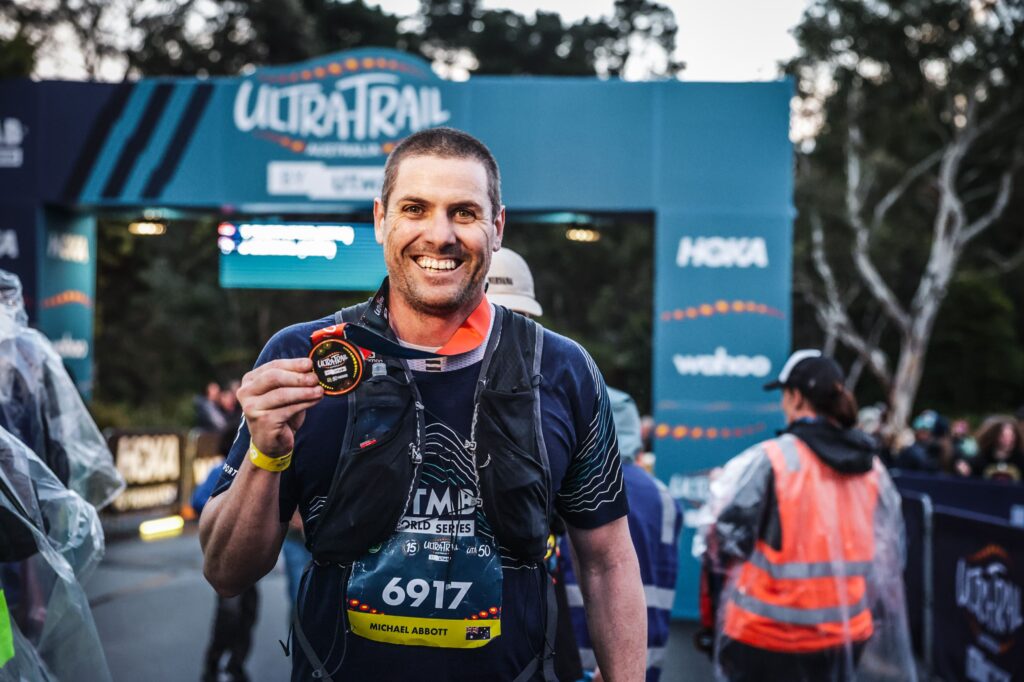Most of you know that I had reconstructive surgery on my left knee to create a new ACL from my hamstring. That was August 29th last year. Just over 8 months later, I completed the UTA50 ultramarathon without injury or fear of my knee. This is a 50 kilometre ultra marathon held in the Blue Mountains of New South Wales each year.
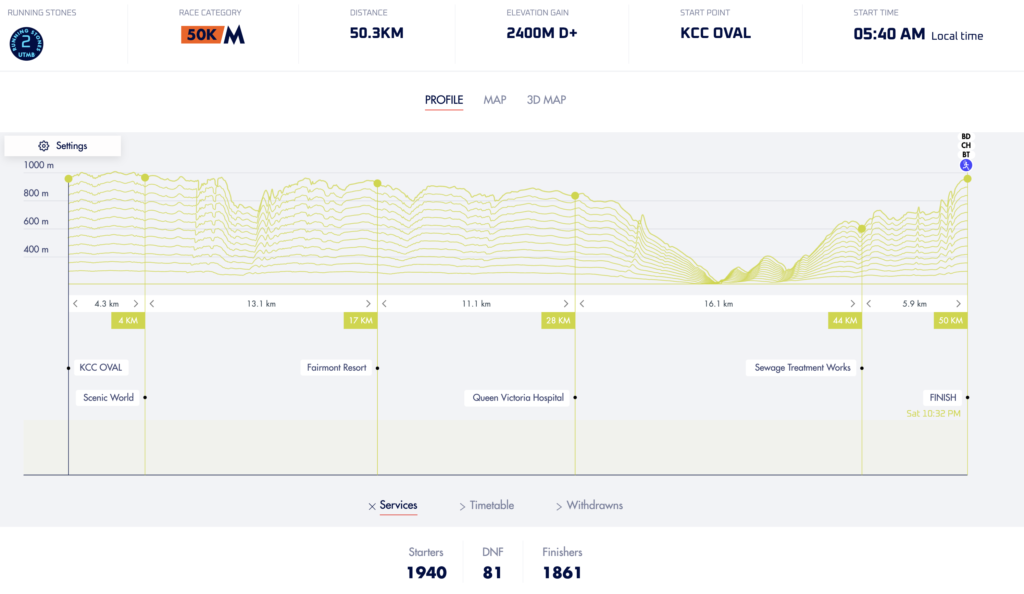
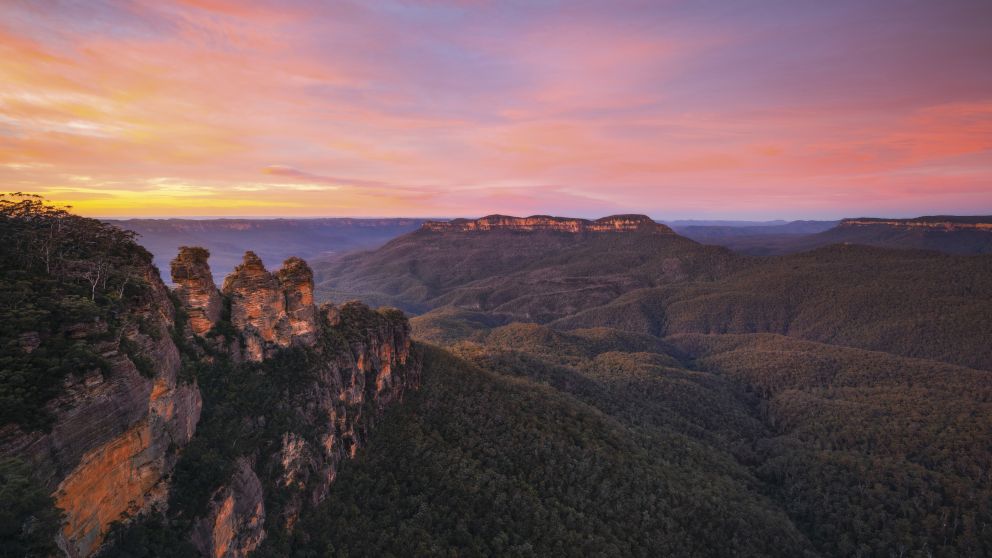
I don’t write this to brag, I want to inspire and encourage others with my story as well as educate anyone trying to rebound from injury with some of the tools and tips I utilised myself.
I want to apologise to those who have asked me in person about my race experience. I struggle to know where to start or how to express such a huge thing eloquently. Also, In the past my ego tried to impress others so I try to shy away from that habit which can make it difficult to share my achievements. I’ll first try to encapsulate the whole race, then some of how I approached this whole endeavour and hopefully some points to help others.
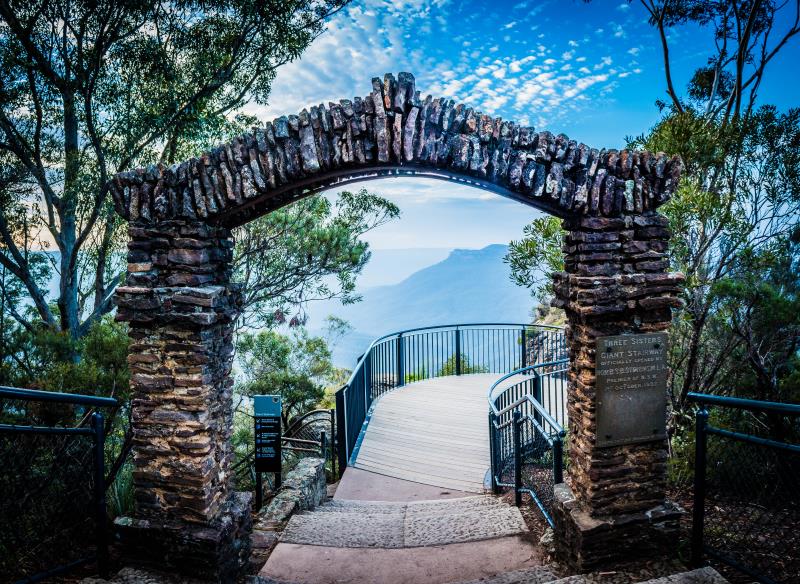
THE BUILD UP
Leading into the race week I was slightly nervous, although I had managed my knee by cautiously increasing the amount of kilometres I trained as well as prioritising the strength work, I had missed two big weekends worth of long runs due to being quite ill over Easter.
I was quite laid back about the preparation and packing. This was intentional. I didn’t buy the mandatory gear I was missing until Tuesday and I didn’t pack until the day I was leaving, Thursday! I’m a strong believer in recognising your tendencies and bias’, for me, I tend to go all in and aim to do my absolute best. That default mindset was not going to serve me here with my personal goals, and so, I consciously tried to keep it as casual as possible to offset that. My goal was to simply finish and not injure myself in any way. I had conversations with myself about what circumstances would lead to me pulling out, knowing that without these in place, I’d likely push through in the moment.
Of course there were drawbacks to this approach, I didn’t take any other footwear and wore my race shoes on the plane, to the showers and had to use them after the race all the way home! Gross! There were two other complications that this laid back approach caused. I flew to Sydney on Thursday night on the red eye which, with the race on Saturday, is the most important night for quality sleep. I got absolutely NONE! Luckily, the dorm room I booked that slept 12 only had 4 blokes and I slept 10 hours Friday night. The other thing I figured out, 30 minutes before passing out Friday night, was that my wave actually started at 8am, not the 6am I had calculated when I converted it to Perth time for Kristen.
The night before I felt nervous but in the morning I was just excited to see how it would unfold…
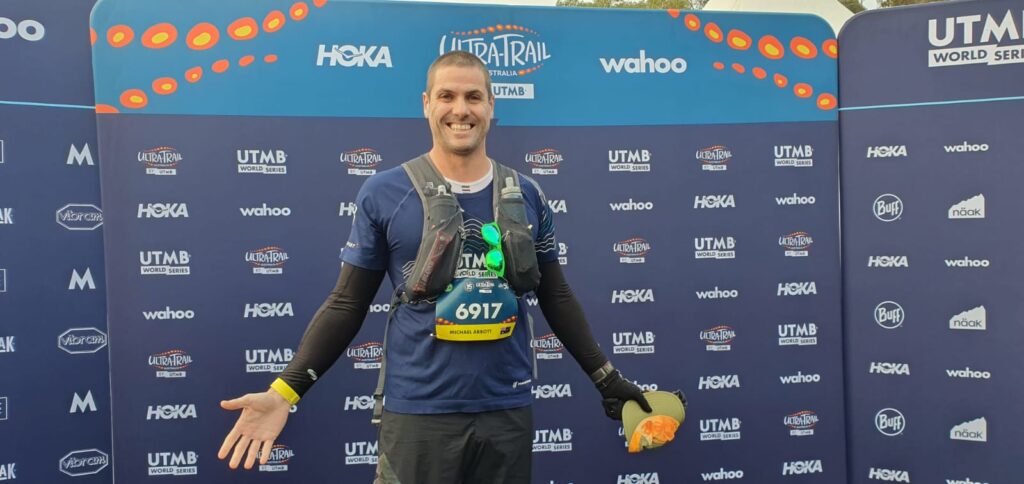
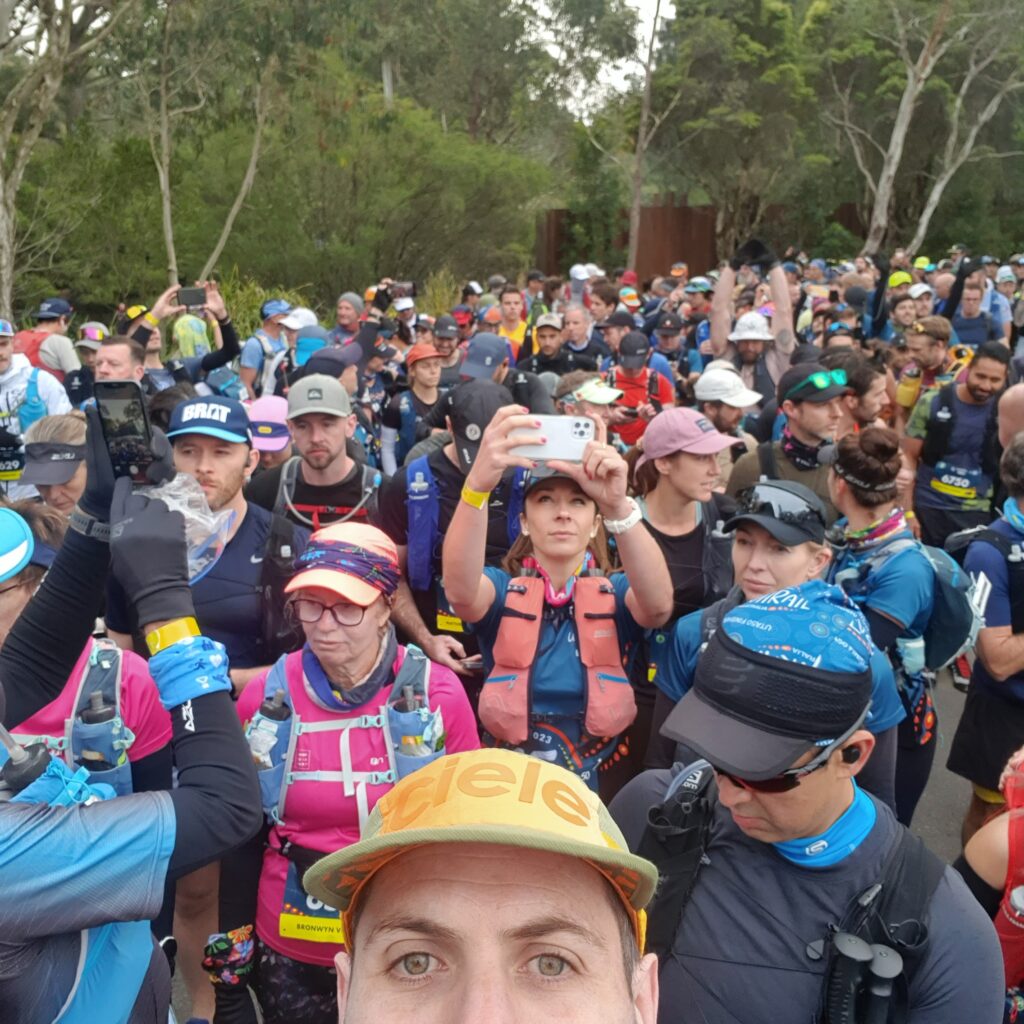
THE BIG DAY
I started in wave 7 which was the last of the day for the 50km participants. Every other wave had 150 people but the final wave had roughly 700. Knowing that after the first 6 km we would hit a conga line of people trying to go down the 3 sister steps I jogged along slightly quicker than perhaps I should. One of my favourite parts of the beginning was how relaxed I felt and how much I was enjoying the moment (as opposed to purely focused on management and racing as some choose to be). I was starting conversations with anyone around me and being really playful, not something that naturally comes out of me unless I’m very comfortable.
The relentless nature of the stairs up and down was something I hadn’t fully appreciated! Despite the difficult terrain at times, I was doing a great job of getting in my water, electrolytes, salt pills, calories and holding myself back all the way until the 28 kilometre aid station. Just prior to getting to the aid station, I stubbed my left foot twice within minutes and my toes were throbbing, luckily this didn’t worsen and was soon taken over by a stronger sensation. Leaving the checkpoint, the all over discomfort started to creep in over the coming kilometres and I had to focus a little more on what I was experiencing as the negative thoughts became louder in my mind.
It’s funny how much of a mental battle these things can be and how sneaky your own brain can be to manipulate you into stopping. I felt positive all the way until I reached a very long downhill section on fire trails. The ground was loose gravel and the gradient was 45 degrees or higher for hundreds of metres at a time. I had planned with my coach to shuffle down for 5 minutes then take 1-2 minute walk breaks to save my quads, downhill running is brutal on the thighs and with 1500 meters more of elevation gain ahead, this was a good strategy for my lack of a large training block.
Within the first kilometre of this 8 kilometre section, I was no longer jogging at all. The pain was all consuming and frustration was rising as runner after runner skipped by. I turned off aeroplane mode on my phone just so I could complain to my coach via text. When the downhill section finally ended I was mentally fighting to break into a jog any time the ground levelled out slightly. At the final checkpoint I knew I had 9 kilometres to go and was likely to finish If I just kept moving. The uphill gravel road was relentless and I had to fight my brain from doing the mental maths of how much longer this would likely take. I told you it was sneaky.
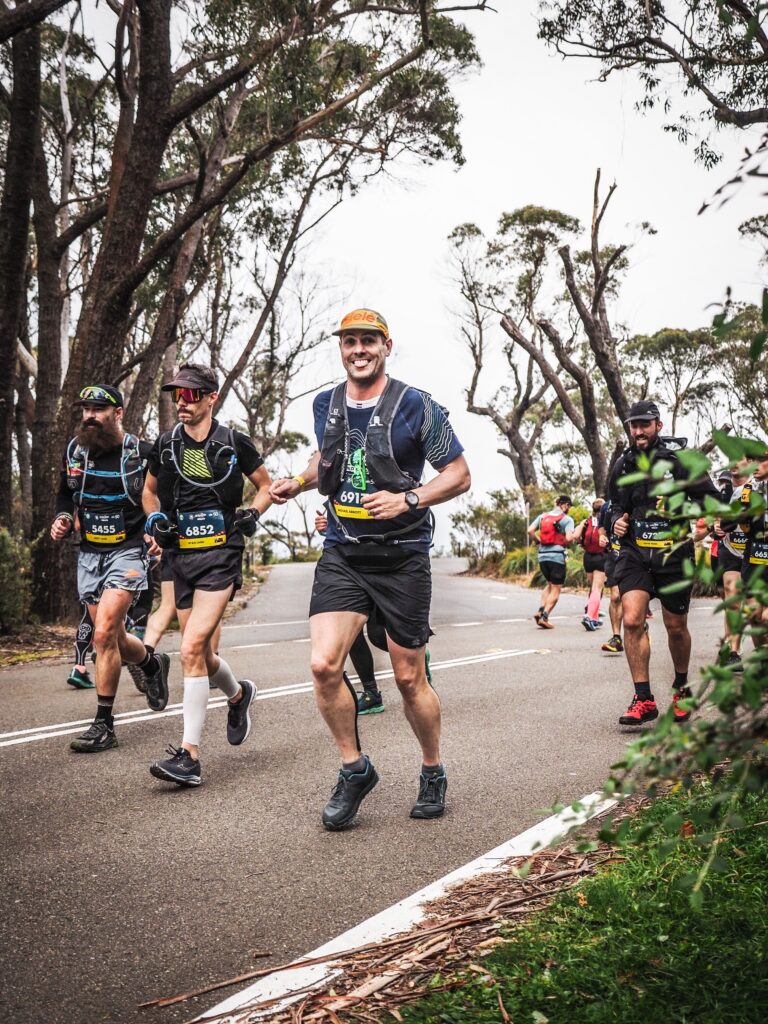
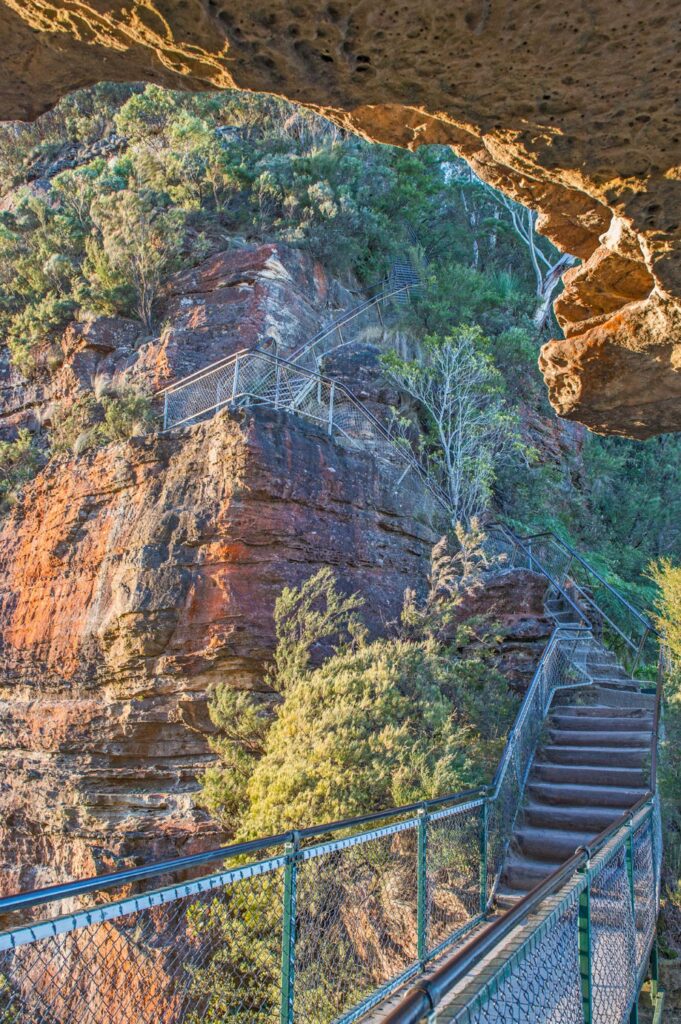
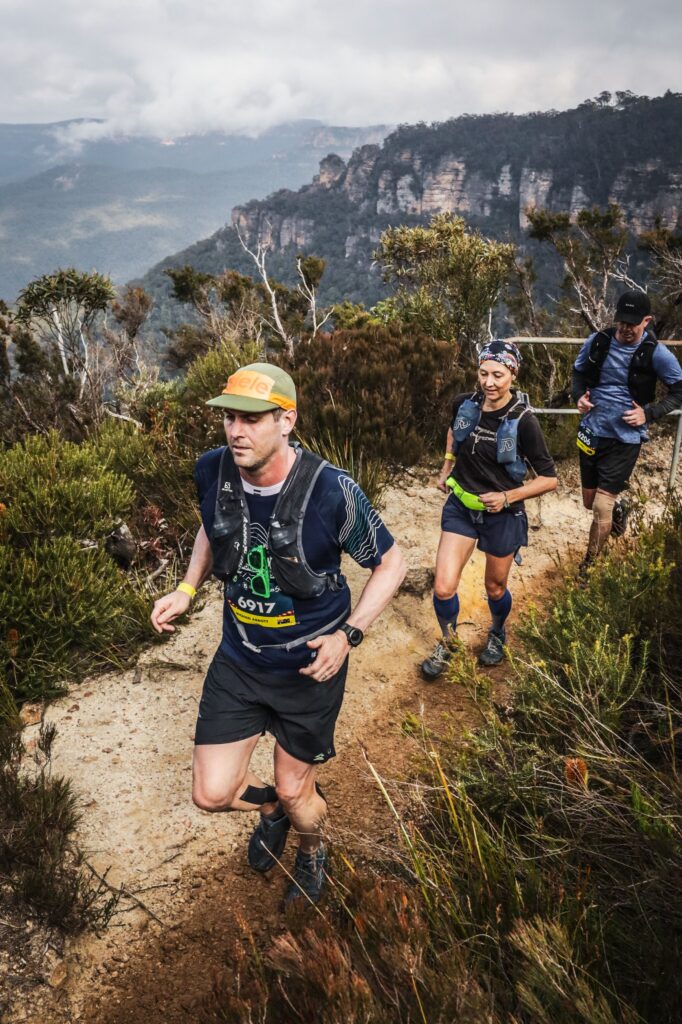
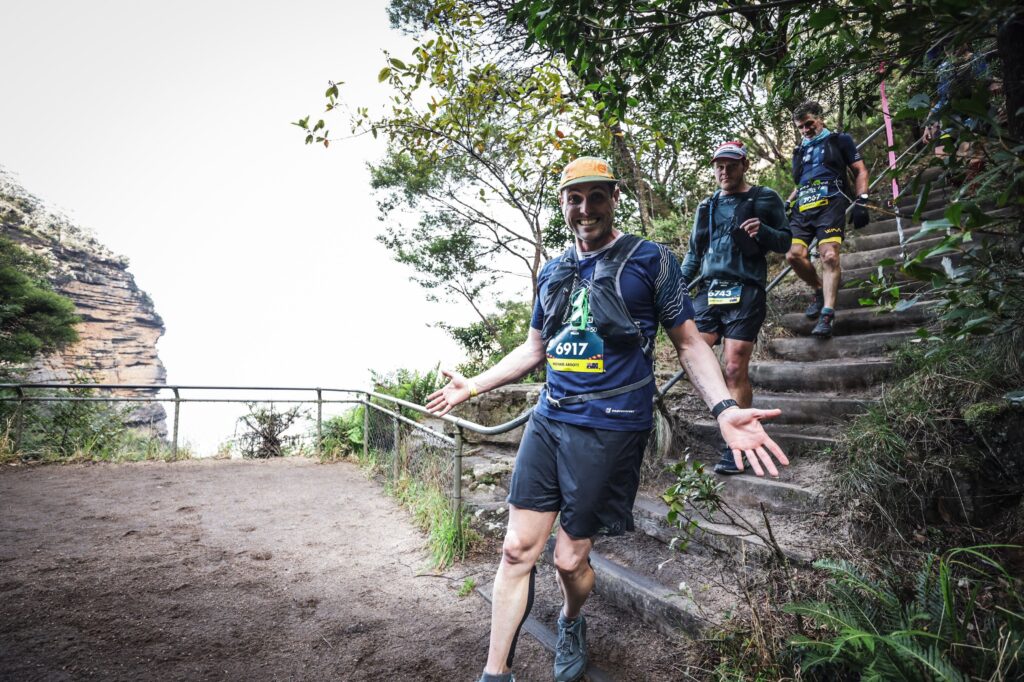
During this stage, 7-8 hours into the event, I began to feel a pull in my right inner thigh and a sharp pain behind the knee whenever I lifted it for stairs. As the time went by this turned into an ache during uphill walk sections as well. I believe the right was likely compensating for the left and slightly working harder all day. The developing sensations were luckily forgotten when it began to rain, the 45 minute heavy downpour was a welcomed distraction, however, at the time, I was fearing it would last all the way to the end! Some sections of the ground turned to mud with puddles that as best I tried to avoid, soaked through my right foot on one miss step. Just another little annoyance on top of many little mounting others.
I had many great conversations with fellow runners earlier in the day but these few hours were spent mentally battling towards the finish. Gratefully, a lady came up behind me and was happy to hike together for a period. She said she was feeling low earlier but some caffeinated gel blocks had perked her up. After a while, she went past me but stopped 20 metres in front, turned around, and said “Hey, do you want these last few blocks?!”. Before I could even decide if it was rude or selfish to accept my mouth yelled “Yes, please!”. At the time, I didn’t appreciate how helpful these probably were because a short while later I overtook at least a dozen others on the final trail along the mountain side towards Ferber steps.
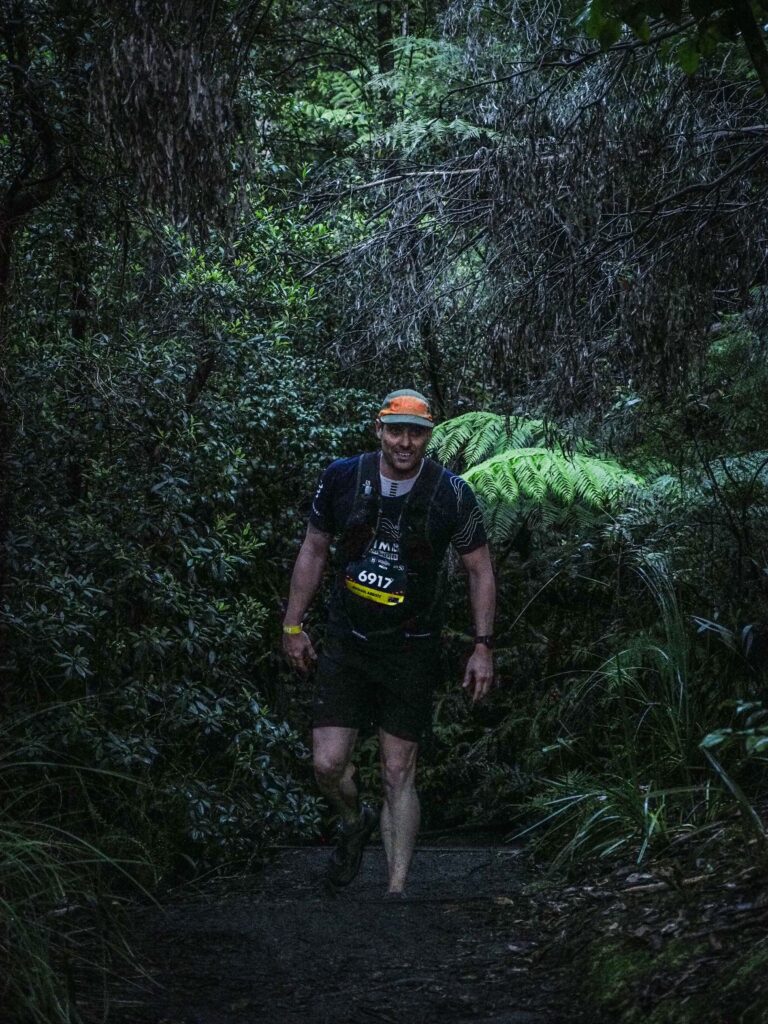
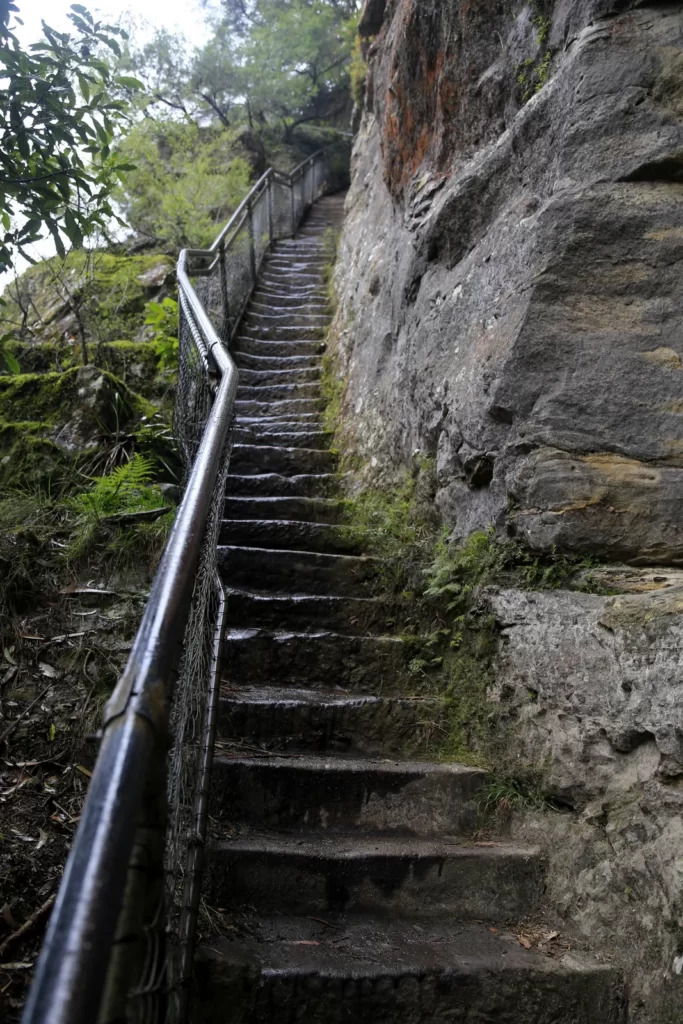
These 996 steps, followed by a 300m jog at the top, made up the final 500 metres of the race. For many of these steps I was forced to step up with my left leg and place my right foot on the same stair as my left, essentially doubling the time to get to the top. It was just too painful to step up a full step anymore with the right. I was also frustrated because I had been told these stairs had handrails on both sides, I had envisioned pulling my lower body up. Having that picture broken was just one more bonus challenge. It was quite excruciating to drag myself up these steps but if I’m being honest, that’s mainly because I didn’t want to prolong the struggle anymore and was pushing hard to get it done. I resorted to some bear crawling to switch up the muscle groups working but that was in of itself hard to do for too long.
Eventually, I made the top and was so elated I did jog those last 300 metres. At the final checkpoint with 9 kilometres to go, an 8 hours finish seemed possible. The sheer vertical metres in that final stretch quickly pushed that finish out to my final time of 9 hours and 5 minutes.
Here is a really cool short video of the actual steps!
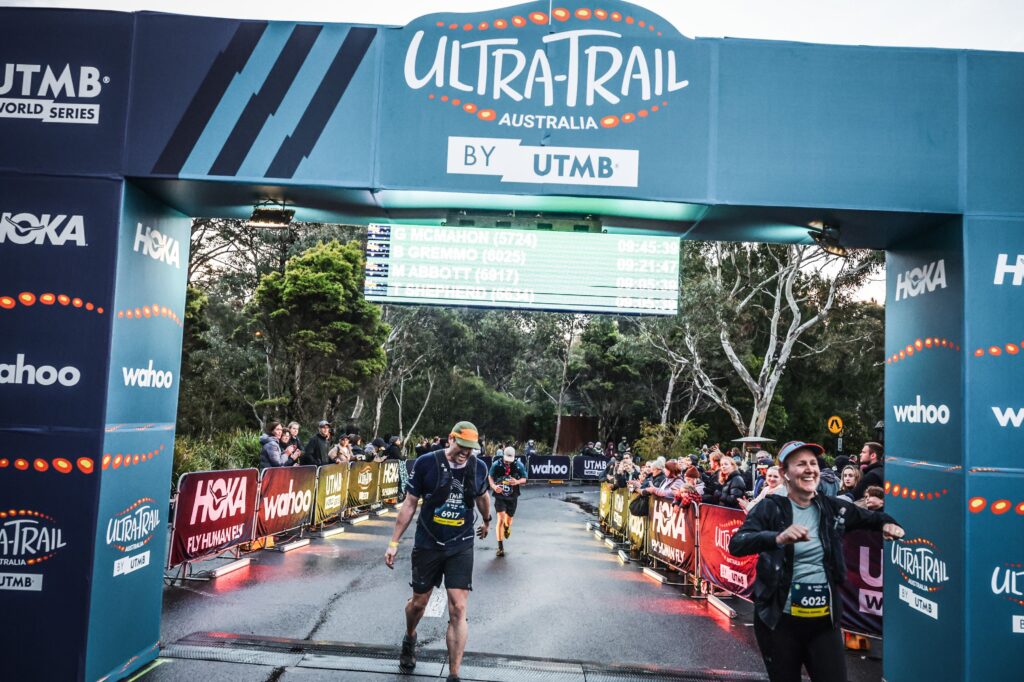

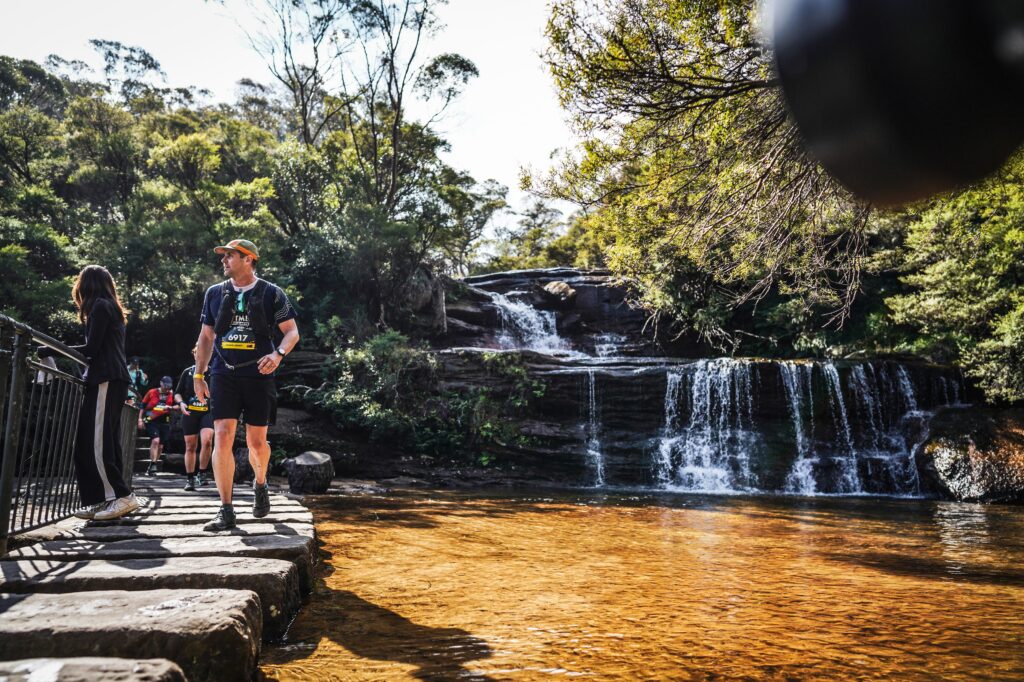
My Approach & Tips for you…
I wanted to give some insights into how I managed to complete this event and hopefully, there are some aspects you can take and make your own.
I spent a lot of time watching youtube videos and reading facebook groups about trail running and ACL recovery. I spent time planning, breaking down all the aspects of this goal I’d decided on. It was a good distraction in the first few months when I was very limited in what I could physically do. It kept me positive and was fuelling my motivation to dream about things getting better. I’m not sure what Kristen thought when I was spending hours watching other people run on TV but I knew what I was doing! Your mind will go where you let it; Focusing on what you can’t do, how hard it currently is or other negative aspects, even if justified, won’t serve you as much as finding positive things you can do even if they are minute or mainly a momentary distraction.
One foot forward, day by day, compounding benefit comes from consistently making deposits!
I constantly reminded myself of the time It was going to take to fully recover. The standard advice is two full years. I knew that unless I kept that fact clear and central in my mind, I could be susceptible to the inevitable downs knocking me off course or just getting ahead of myself during the ups. Spending time to mentally prepare for the road ahead, strengthen your resolve and revisit this often is worth the time.
I surrounded myself with reminders of what I was aiming at and created ways to reward myself for progress. I don’t rely on willpower or motivation to move forward because those are finite and sometimes fickle. I use tricks to make it easier to stay on track. Planning and preparation is important to reduce your need for willpower or motivation.
Make yourself accountable to your dreams by learning to create “S.M.A.R.T” goals and sharing them with others. If you struggle with motivation or don’t know about effective goal setting, look out for my 3 part workshop series where I cover “Habit Loops” and smart goals in the first part.
Look for experts and guidance from professionals wherever you can find it. I have always sort out people who have what I want or have coached others to achieve what I want. It saves times, improves results and avoids pitfalls.
Lastly, look for value in what you want to do for others. I thought about the example I was setting for our daughters, the inspiration I might be giving some of our clients and, I visualised writing the below post on an ACL recovery Facebook page that I frequently scrolled through during my first month of recovery. Reading other people’s stories helped me when it was hardest and I wanted to give something to those coming after me.
So, if I managed to inspire you in any way or teach you something useful that would be a great bonus to go along with my medal baby! Yeah!

